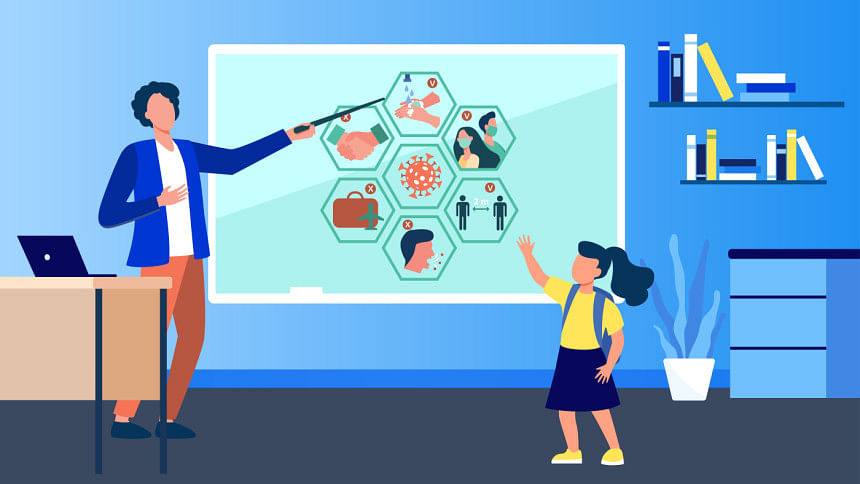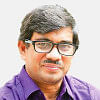How young citizens of Bangladesh can transform the future of its healthcare

In Bangladesh, seeking healthcare services is marked by profound challenges that stem from a complex interplay of demand- and supply-side barriers. On the demand side, pervasive low health literacy severely limits individuals' ability to make informed decisions about their well-being. Sociocultural norms, often deeply entrenched, discourage proactive engagement with healthcare systems. At the same time, misconceptions about medical care, such as equating medicine with treatment, or assuming that costly interventions guarantee superior outcomes, further complicate the issue. Affordability remains a significant hurdle as many families struggle to access even basic services. Additionally, the readiness of public health facilities is often inadequate, undermining trust and discouraging utilisation. On the supply side, the healthcare system is a fragmented, pluralistic mix of providers, ranging from trained allopathic practitioners to unregulated traditional healers. This diversity, coupled with weak regulatory oversight, results in inconsistent care quality and frequent instances of inappropriate treatment.
For decades, efforts to address these issues have centred on behaviour change communication (BCC) campaigns, which aim to educate communities and shift attitudes towards healthier practices. While these initiatives have achieved some success in raising awareness, their impact is often fleeting. Top-down messaging struggles to resonate with our diverse population, failing to account for regional, cultural, or socioeconomic variations. Moreover, these campaigns rarely address deeper systemic issues, such as widespread mistrust in public health services or the absence of robust regulatory frameworks. As a result, the gains from such interventions tend to dissipate quickly, leaving communities vulnerable to the same barriers. To break this cycle, Bangladesh requires a transformative, community-driven solution, one that harnesses the potential of its youngest citizens to lead a paradigm shift in health literacy and behaviour.
Imagine a classroom in a rural Bangladeshi village where third-graders are not only learning foundational subjects like mathematics and language but also absorbing critical lessons about hygiene, the importance of vaccinations, and the value of clean water. Picture high school students stepping into leadership roles, organising health fairs to dispel myths about generic medicines or teaching their parents how to recognise early symptoms of common illnesses. This vision forms the core of an innovative proposal to train students from classes 3-12 as health ambassadors, equipping them with the knowledge, skills, and confidence to drive meaningful change in their families, peer groups, and broader communities.
Students are uniquely positioned to act as catalysts for transformation. As trusted members of their households, especially in rural areas, school-going children have a remarkable ability to share knowledge in ways that resonate deeply, often bypassing the resistance that external campaigns encounter. A young girl explaining the importance of antenatal care to her mother might inspire timely visits to a clinic, improving maternal and child health outcomes. A teenage boy challenging myths about traditional healers in his village could shift community perceptions, encouraging reliance on qualified providers. Through their peer networks, students can amplify these messages, normalising behaviours such as seeking care from licensed practitioners or prioritising preventive measures like regular check-ups. In communities where scepticism towards public health services runs high, students can serve as bridges, rebuilding trust by sharing evidence-based information about the benefits of government-run clinics and programmes.
The proposed approach is both practical and adaptable to the developmental stages of students. Children in classes 1-5 would focus on foundational health concepts, such as the importance of handwashing, safe drinking water, and balanced nutrition. These lessons would be integrated into their existing curriculum, making them accessible and engaging through interactive activities like storytelling or games. Older students, in classes 6-12, would tackle more complex topics, including maternal and child health, the management of non-communicable diseases like diabetes, and the dangers of self-medication or reliance on informal providers. To deliver this education, schools would establish well-being clubs—student-led groups supported by trained teachers. These clubs would serve as platforms for peer learning, fostering a sense of ownership and responsibility among participants.
Beyond the classroom, students would engage in hands-on, community-oriented activities designed to translate knowledge into action. Peer health clubs would encourage students to share what they have learnt with friends, creating a ripple effect of awareness. Community outreach initiatives, such as health fairs or door-to-door campaigns, would allow students to directly engage with neighbours, promoting local health services and addressing common misconceptions.
This strategy offers a sustainable, cost-effective alternative to traditional campaigns. By leveraging existing school infrastructure, the programme minimises the need for additional resources while maximising reach. Teachers, already embedded in the education system, can be trained to deliver health lessons, ensuring consistency and scalability. Local health workers can complement these efforts by providing technical support, such as guest lectures or materials for student-led campaigns. The ripple effect of this approach is profound: a single child educating their family can spark generational change, while peer-to-peer sharing builds a network of informed advocates. Over time, these efforts can reshape community norms, fostering a culture of accountability where citizens demand quality care and providers are incentivised to deliver it.
Evidence from similar initiatives underscores the potential for success. In India, school-based health education programmes have significantly improved hygiene practices, leading to measurable reductions in waterborne diseases. In sub-Saharan Africa, youth-led campaigns have increased awareness of HIV/AIDS, driving higher rates of testing and treatment adherence. These examples demonstrate that young people, when equipped with the right tools, can affect meaningful change. In Bangladesh, implementation would begin with the development of a tailored curriculum, designed in collaboration with health and education experts to align with national priorities. Teachers and students would undergo training to ensure effective delivery, while partnerships with local health offices would provide logistical support. Successful pilots could be scaled up through integration into national education policies, with backing from government agencies and development partners.
The challenges facing Bangladesh's healthcare system are formidable, but they are not insurmountable. By investing in students as health ambassadors, the country can cultivate a generation of informed, empowered leaders who redefine how communities engage with healthcare. This approach taps into the energy, creativity, and influence of young people, transforming them into agents of change. As students share knowledge, challenge misconceptions, and advocate for better care, they lay the foundation for a healthier, more equitable society. The voices of confident, knowledgeable young ambassadors could ignite a healthcare revolution, ensuring that every citizen has the tools to seek, demand, and access quality care. Through this innovative strategy, Bangladesh has the opportunity to not only address its immediate health challenges but also build a resilient, informed population capable of sustaining progress for generations to come.
Dr Syed Abdul Hamid is professor at the Institute of Health Economics of Dhaka University and convener at Alliance for Health Reforms Bangladesh (AHRB).
Views expressed in this article are the author's own.
Follow The Daily Star Opinion on Facebook for the latest opinions, commentaries and analyses by experts and professionals. To contribute your article or letter to The Daily Star Opinion, see our guidelines for submission.

 For all latest news, follow The Daily Star's Google News channel.
For all latest news, follow The Daily Star's Google News channel. 





Comments